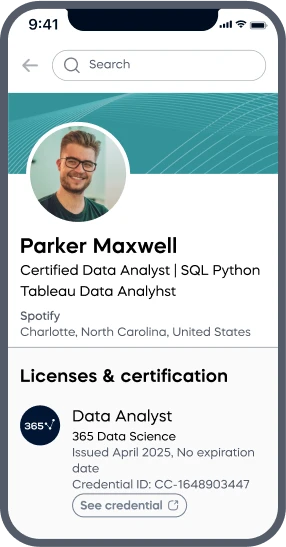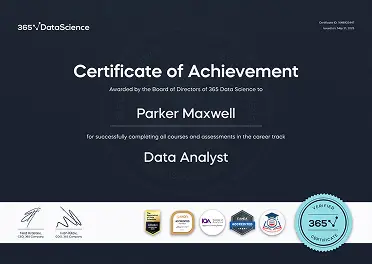Nilotpal C.
See all reviews
Take your data analyst skillset to the next level: master working with dates and times in Python






Skill level:
Duration:
CPE credits:
Accredited

Bringing real-world expertise from leading global companies
Master's degree, Sound Engineering

Bringing real-world expertise from leading global companies
Master's degree, Economic and Social Sciences
Description
Curriculum
Free lessons

1.1 What Does the Course Cover
4 min

1.2 Introduction to Working with Dates and Times
3 min

1.3 Time Standards and Regulations: GMT and UTC
6 min

1.5 Principles of Working with Dates and Times in Computing – Unix Time
3 min

1.7 Principles of Working with Dates and Times in Computing – Dates in Python
5 min

1.9 The datetime Module: working with Dates
7 min
#1 most reviewed
9 in 10
of our graduates landed a new AI & data job
96%
of our students recommend
ACCREDITED certificates
Craft a resume and LinkedIn profile you’re proud of—featuring certificates recognized by leading global
institutions.
Earn CPE-accredited credentials that showcase your dedication, growth, and essential skills—the qualities
employers value most.





Certificates are included with the Self-study learning plan.


How it WORKS